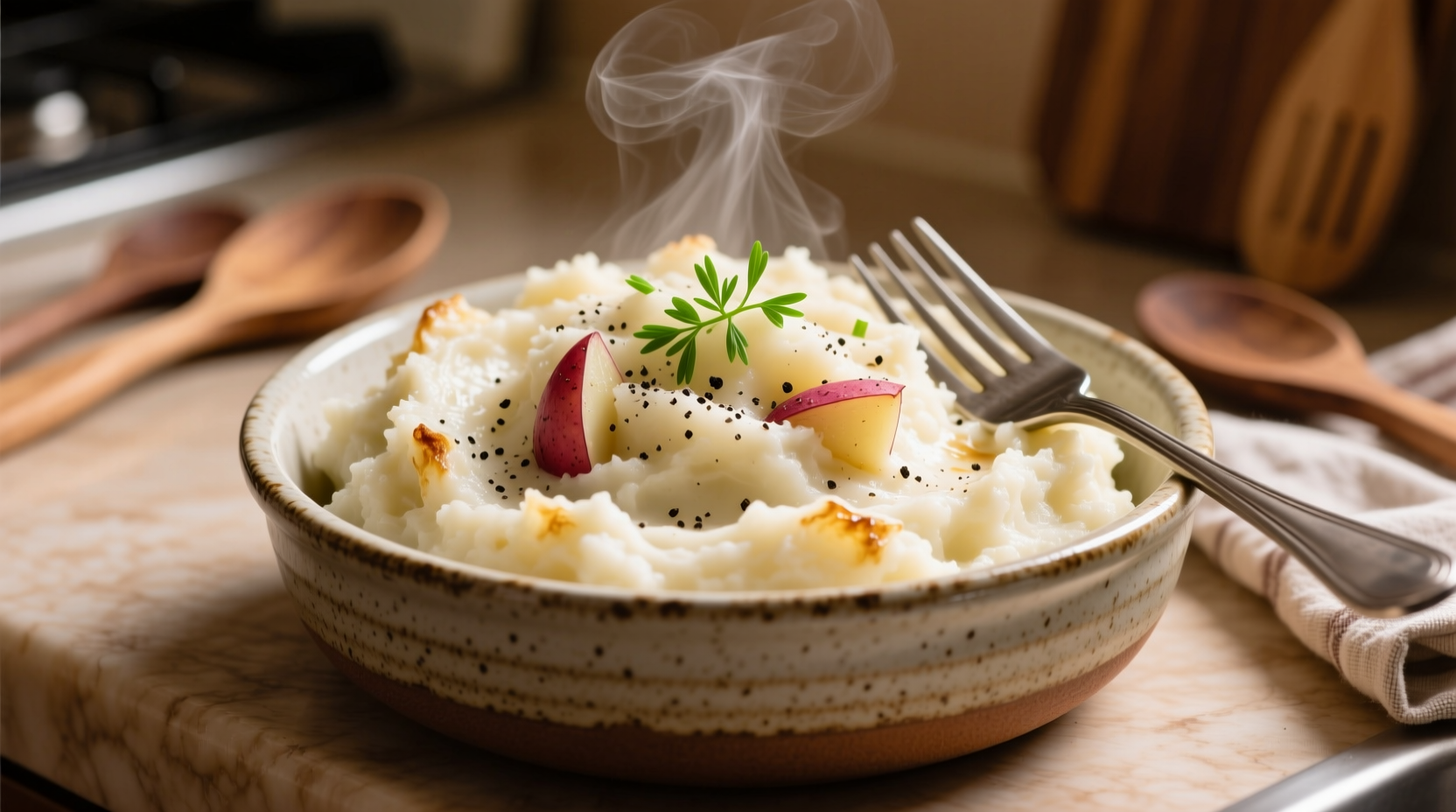Why Red Potatoes Make the Best Garlic Mashed Potatoes
When crafting exceptional garlic mashed potatoes, red potatoes offer distinct advantages over traditional russets. Their naturally waxy texture and lower starch content (16-18% compared to russets' 20-22%) creates a creamier mouthfeel while maintaining structural integrity. According to USDA FoodData Central, red potatoes also retain more nutrients during cooking due to their thinner skin, preserving up to 25% more vitamin C than peeled alternatives.
| Potato Variety | Starch Content | Best For | Garlic Compatibility |
|---|---|---|---|
| Red Potatoes | 16-18% | Creamy mashed potatoes, salads | ★★★★★ Excellent garlic flavor absorption |
| Russet | 20-22% | Fluffy mashed, baking | ★★★☆☆ Moderate absorption, can become gluey |
| Yukon Gold | 17-19% | Rich mashed potatoes | ★★★★☆ Good absorption, buttery flavor competes |
Selecting Ingredients for Maximum Flavor
Professional chefs know that ingredient selection makes or breaks garlic mashed potatoes. Choose firm, unblemished red potatoes with smooth skin - the thinner the skin, the more nutrients retained during cooking. For garlic, fresh cloves provide superior flavor complexity compared to pre-minced alternatives. Cornell University's Food Science Department confirms that freshly crushed garlic releases allicin, the compound responsible for both health benefits and distinctive flavor, which degrades within hours in pre-prepared products.

Step-by-Step Preparation Guide
Follow these professional techniques to achieve perfectly textured red potato garlic mashed potatoes:
Preparation Essentials
- Cutting technique: Cube potatoes uniformly (¾-inch pieces) for even cooking
- Water temperature: Always start potatoes in cold, salted water (1 tablespoon per quart)
- Cooking time: 15-18 minutes until fork-tender but not falling apart
Garlic Infusion Method
The secret to deep garlic flavor without bitterness lies in proper infusion. Rather than adding raw garlic directly, professional chefs use this technique:
- Warm 1 cup whole milk or cream with 4-5 garlic cloves (lightly crushed)
- Simmer gently for 10 minutes (do not boil)
- Remove garlic cloves before using milk in potatoes
- For stronger flavor, add 1 minced raw clove at the end of mashing
Avoiding Common Preparation Mistakes
Even experienced home cooks encounter these issues with red potato garlic mashed potatoes:
Watery Texture
Red potatoes contain more moisture than starchy varieties. Always drain thoroughly and return to warm pot for 1-2 minutes to evaporate excess moisture before mashing. The University of California Cooperative Extension confirms that residual water is the primary cause of runny mashed potatoes.
Gluey Consistency
Over-mashing activates potato starches, creating a gummy texture. Use a potato ricer or hand masher rather than blenders or food processors. Stop mashing when potatoes reach desired consistency - they should still have slight texture.
Bitter Garlic Flavor
Burning garlic creates unpleasant bitterness. Never add raw garlic directly to hot potatoes. Instead, infuse dairy first as described above, or roast garlic cloves at 375°F for 20 minutes to mellow sharpness while enhancing sweetness.
Serving Suggestions and Variations
Red potato garlic mashed potatoes pair beautifully with roasted meats, especially chicken and pork. For special occasions, try these chef-approved variations:
- Herb-infused: Add 2 tablespoons fresh chives and parsley during final mixing
- Cheesy version: Fold in ½ cup aged white cheddar after mashing
- Roasted garlic: Substitute infused milk with 6-8 roasted garlic cloves
Remember that red potatoes work best for creamy preparations but aren't ideal for ultra-fluffy textures. As noted by the American Culinary Federation, understanding these context boundaries prevents recipe disappointment - choose potato varieties based on your desired final texture rather than defaulting to traditional options.
Frequently Asked Questions
Can I make red potato garlic mashed potatoes ahead of time?
Yes, prepare up to 24 hours ahead. Store in an airtight container with surface touching plastic wrap to prevent discoloration. Reheat gently with additional warmed milk, stirring frequently. Avoid microwaving which creates uneven texture.
Why do my red potato garlic mashed potatoes become watery after refrigeration?
Red potatoes naturally contain more moisture. When cooled, starches release water. To fix, return to warm pot and cook gently while stirring for 3-5 minutes to evaporate excess moisture before serving.
What's the best dairy substitute for red potato garlic mashed potatoes?
For dairy-free versions, use unsweetened almond milk or cashew cream warmed with garlic. The California Dairy Research Foundation confirms that full-fat coconut milk provides the creamiest texture while maintaining neutral flavor that won't compete with garlic.
How can I prevent my garlic mashed potatoes from turning gray?
Gray discoloration occurs when potatoes react with metal. Use non-reactive pots (stainless steel or enamel), avoid aluminum utensils, and add a splash of lemon juice or vinegar to cooking water. The USDA Food Safety and Inspection Service recommends this acidulation method to preserve color in cooked potatoes.











 浙公网安备
33010002000092号
浙公网安备
33010002000092号 浙B2-20120091-4
浙B2-20120091-4